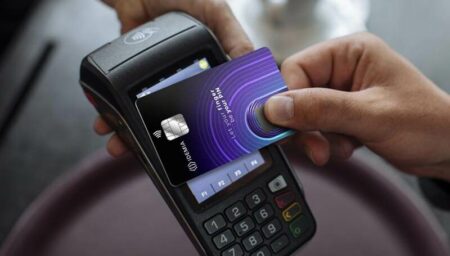Let your finger be your PIN with F.CODE

How do you unlock your smartphone? Chances are that you’ve long said goodbye to the old-fashioned PIN code and now scan your fingerprint or face. This simple movement – something we do on average 52 times1 a day (or as much as 152 times2 if you’re a millennial) – has not only simplified our lives and secured our devices, but has also led to the wide-scale adoption of biometrics around the world.
Whether it’s fingerprint scans, the most widespread form of biometrics, facial, voice or iris, using these four major forms of biometric authentication on a daily basis has opened consumers’ minds to an increasing number of use cases.
An astounding 78% of global consumers3 have tried some form of biometric authentication and 74% have a positive attitude towards the technology3. Today, fingerprint leads the pack with 63% of global consumers who have already given it a try3. Meanwhile 25% have used facial biometrics and 20% have used iris3. With the world primed, the industry has turned to biometrics to simplify other areas of our everyday lives.
When asked about what could prevent them from using biometric technology, the number one response (37% of global consumers) was the fear of stolen identity3. That said, this feeling of wariness didn’t outweigh the promise of convenience. These same customers said they felt most comfortable with storing their biometric credentials directly on their payment cards3 when asked about using their fingerprint instead of a PIN for card payment.
With 61% of global consumers using payment cards at physical merchant desks more than 10 times a month, many of them as often as 30 times per month3, forgetting one’s PIN code can truly be a nightmare. An inconvenience that affects 54% of them, who forgot their payment card PIN code in the last 18 months3. When we consider the hassle associated with a forgotten PIN code, it’s not surprising that 82% said they are ready to replace the classic PIN code with a fingerprint scan when paying with their cards3.
Another advantage is getting around the current limit on contactless payments. When asked if they are ready for secured, no-limit contactless payments, 72% said yes3. At IDEMIA, we’re on top of this biometric trend. Our F.CODE card automatically verifies the user’s identity thanks to an integrated fingerprint reader as the consumer either inserts it for a contact payment or taps it on contactless readers and simultaneously authenticates the payment. Privacy is taken care of by securely housing the fingerprint data in the F.CODE card, and IDEMIA doesn’t handle or store the fingerprint information. Each consumer uploads their data with a simple and fast enrolment solution.

Biometric authentication is seeping into our lives – simplifying and securing countless transactions. While mainstream adoption of this technology is relatively new, consumers are welcoming this disruption with open arms.
As biometric usage spreads across the planet and consumers continue to warm up to the idea of streamlined, hassle free – yet totally secure – transactions, use cases will proliferate. For example, 43% of global consumers would like to use a biometric card to gain access to a secured building and 32% want to see this technology integrated into their transportation pass.
All in all, biometric cards check off the three major concerns on every consumer’s list: security, convenience and privacy. At IDEMIA we’re enthusiastic to see interest growing among our clients in the finance industry and beyond. In one recent use case the F.CODE card is used as the hardware wallet to securely store, access and exchange cryptocurrencies with a fingerprint authentication on the card. What will come next? Contact us to discuss new use cases that we can imagine together. The future of these cards looks very promising, indeed – and we’re proud to be a part of it.
1 https://variety.com/2018/digital/news/smartphone-addiction-study-check-phones-52-times-daily-1203028454
2 https://www.inc.com/john-brandon/science-says-this-is-the-reason-millennials-check-their-phones-150-times-per-day.html
3 Global study independently led by “Data 2 decisions” (Dentsu Aegis Network), encompassing 2,100 people in 8 countries, 2018
Related videos
Latest News